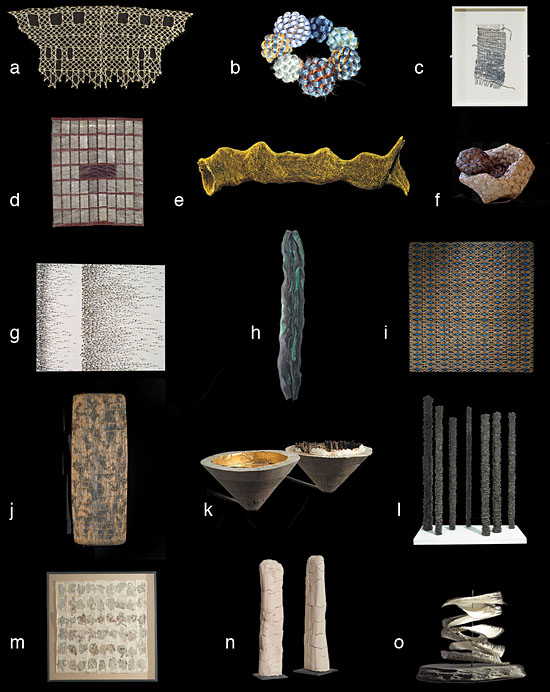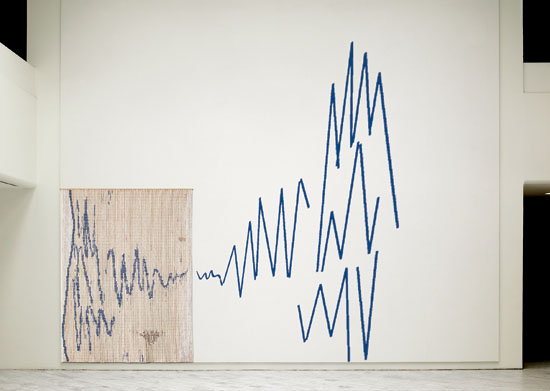Sleight of Hand, currently on exhibit at the Denver Art Museum, celebrates artists, including Lia Cook and Norma Minkowitz, who create works of art that challenge viewers’ perception, through their innovative use of materials and textile techniques. There are a several other artists represented by browngrotta arts who do the same. Inspired by the concept, we created a quiz. See if what you can guess about the materials and methods used to create the works in these images. The short answers appear at the end. You can click on each answer to see a larger version on our website (but not until you’ve made a guess!).

Ed Rossbach, Axel Russmeyer, Sue Lawty, Adela Akers, Karyl Sisson, Kazue Honma, Tomiko Kawata, Kate Hunt, Dani Marti, Merja Winqvist, Heidrun Schimmel, Wendy Wahl, Toshio Sekiji, Simone Pheulpin, Heidrun Schimmel
Answer Key:
a) Ed Rossbach – plastic tubing
b) Axel Russmeyer – bobbins with thread
c) Sue Lawty – woven lead
d) Adela Akers – linen, horsehair, paint and metal wine foil
e) Karyl Sisson – cloth measuring tapes
f) Kazue Honma – Japanese strapping tape, tannin
g) Tamiko Kawata – safety pins on canvas
h) Deborah Valoma – woven copper
i) Dani Marti – marine rope — polypropylene and nylon
j) Merja Winqvist – florist paper
k) Kate Hunt – newspaper, gold leaf, burnt plaster
l) Wendy Wahl – industrial paper and yarn
m) Toshio Sekiji – newspapers from Japan. China and Korea
n) Simone Pheulpin – folded cotton
o) Heidrun Schimmel – heavily stitched cotton, large sewing needle






Who Said What: Roman Kraeussl
From “A Conversation with Roman Kraeussl,” Art + Auction, April 2011, page 48. For more on art as an investment, track down Art + Auction’s April issue, which features the magazine’s annual art investment guide: http://www.artinfo.com/news/story/37392/april-2011-table-of-contents/.